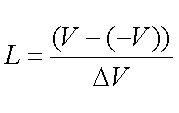
Pulse Code Modulation (PCM) is a technique used in compact disc players in order to encode an analog signal (varying continuous amplitude) into a digital signal (stream of bits). PCM is basically an analog to digital (A/D) conversion. An analog signal that can take an infinite number of voltage levels within a voltage range (bound amplitude) is rounded off against a number of permissible quantization levels. If for instance the continuous signal has a range between -V to +V and each sample is portioned to L subintervals then each quantization level has a magnitude of:

If the value falls somewhere between DV, then L is approximated to a midpoint value. The compact disc player is an application of the PCM. The bandwidth of the digitized audio signal is 20kHz, allowing high fidelity audio sampling. Although the Nyquist sampling frequency is 40kHz, assuming that it is double the maximum allowable audio signal frequency, actual CD sampling is at 44.1kHz. This higher frequency is used to eliminate aliasing problems and distortion in the reproduction phase as explained earlier. The signal is quantized to L=65,636 levels, which corresponds to a 16-bit word (2^16) reducing quantization errors by minimizing deltaV.
A PCM signal is also known as an L-ary digital signal. As an example considering an L=8 PCM signal (3-bit), the following table shows the A/D conversion of the signal (in CD PCM encoding there are 65,636 levels!). Table 1 assumes a 0 bit representation for a zero digital amplitude (other encoding schemes may assume a 0-bit representation as a negative amplitude).
| Digit | Binary Equivalent | Pulse Code Waveform |
|---|---|---|
| 0 | 000 |  |
| 1 | 001 |  |
| 2 | 010 |  |
| 3 | 011 |  |
| 4 | 100 |  |
| 5 | 101 |  |
| 6 | 110 |  |
| 7 | 111 |  |
The representation of the 8 decimal digits from 0 to 7 is known as the natural binary code (NBC). Each level has a unique 3-bit binary code representation so it is distinguishable from the other signal levels.